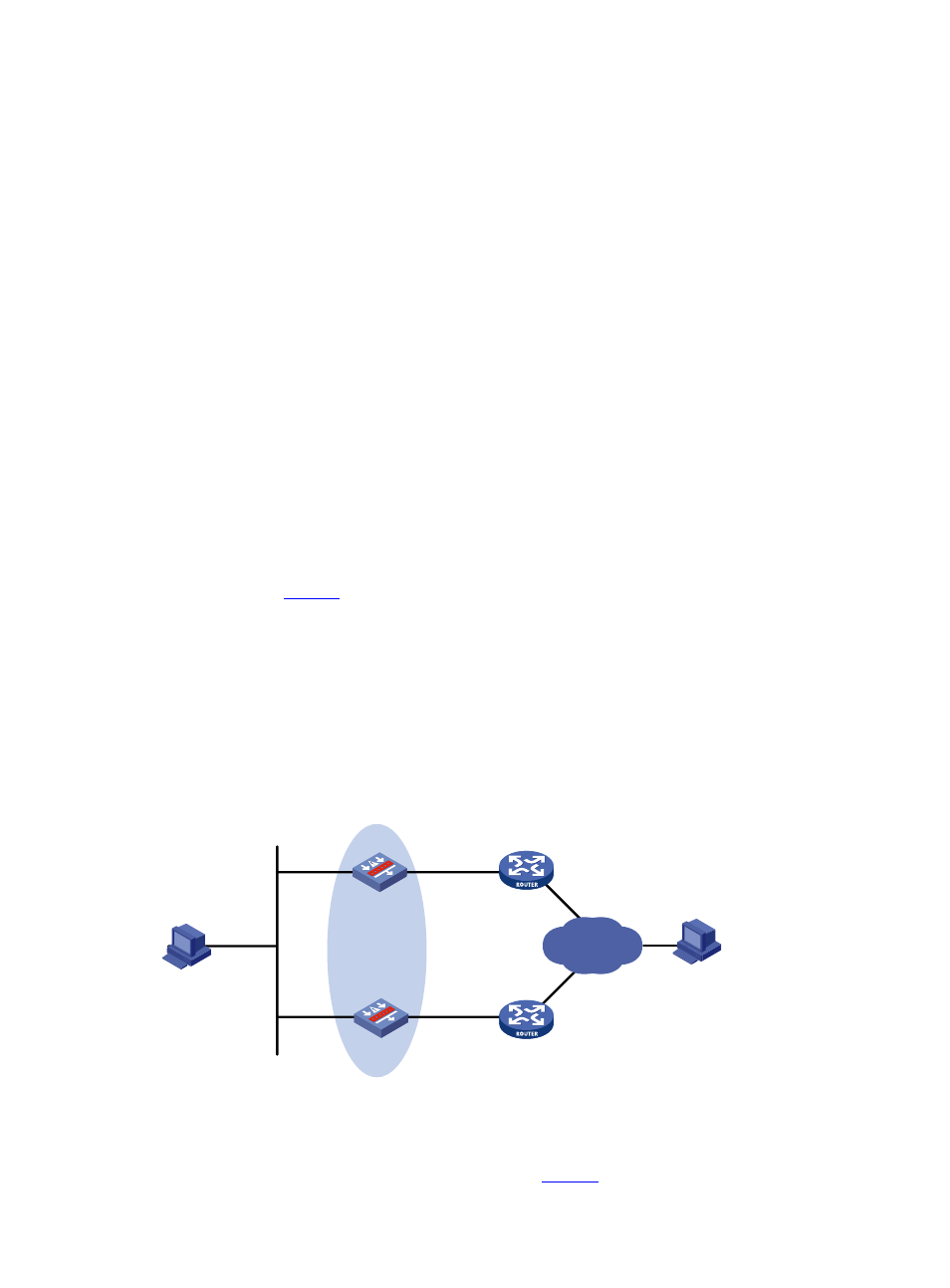Network requirements, Configuration procedure – H3C Technologies H3C SecPath F1000-E User Manual
Page 313

30
PING 20.1.1.1: 56 data bytes, press CTRL_C to break
Reply from 20.1.1.1: bytes=56 Sequence=1 ttl=254 time=2 ms
Reply from 20.1.1.1: bytes=56 Sequence=2 ttl=254 time=1 ms
Reply from 20.1.1.1: bytes=56 Sequence=3 ttl=254 time=1 ms
Reply from 20.1.1.1: bytes=56 Sequence=4 ttl=254 time=1 ms
Reply from 20.1.1.1: bytes=56 Sequence=5 ttl=254 time=1 ms
--- 20.1.1.1 ping statistics ---
5 packet(s) transmitted
5 packet(s) received
0.00% packet loss
round-trip min/avg/max = 1/1/2 ms
VRRP-Track-Interface Management Collaboration
Configuration Example (The Master Monitors the Uplink
Interface)
Network requirements
•
As shown in
, Host A needs to access Host B on the Internet. The default gateway of Host
A is 10.1.1.10/24.
•
Device A and Device B belong to VRRP group 1, whose virtual IP address is 10.1.1.10.
•
When Device A works normally, packets from Host A to Host B are forwarded through Device A.
When VRRP detects that there is a fault on the uplink interface of Device A through the interface
management module, packets from Host A to Host B are forwarded through Device B.
Figure 7 Network diagram for VRRP-track-interface management collaboration configuration
Host A
Device A
Device B
Virtual IP address:
10.1.1.10/24
GE0/1
10.1.1.1/24
GE0/1
10.1.1.2/24
Host B
10.1.1.3/24
20.1.1.1/24
Internet
GE0/2
10.1.2.1/24
GE0/2
10.1.3.1/24
Eth1/1
10.1.3.2/24
Eth1/1
10.1.2.2/24
Router A
Router B
Configuration procedure
Step1
Configure the IP address of each interface as shown in
.
